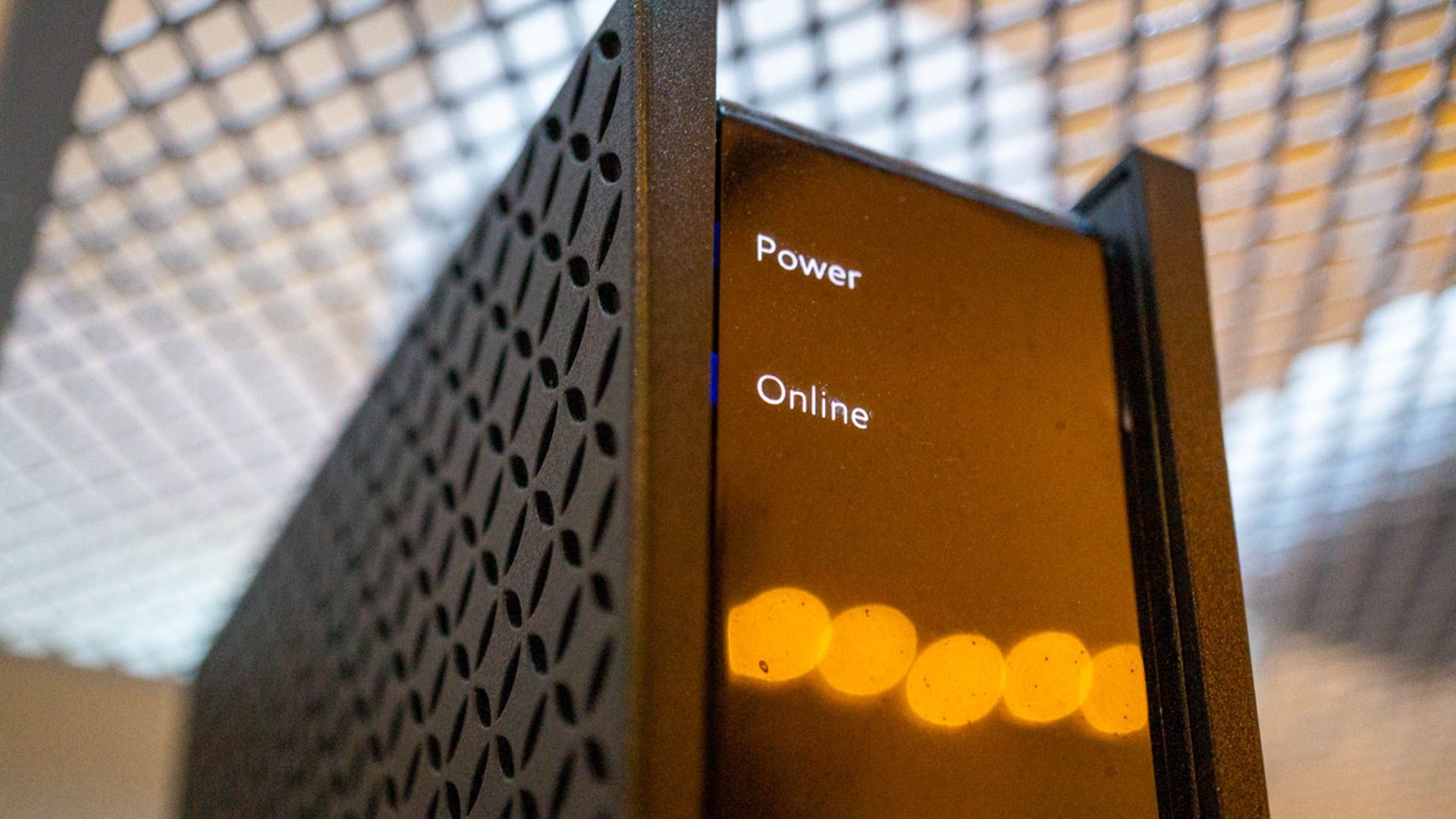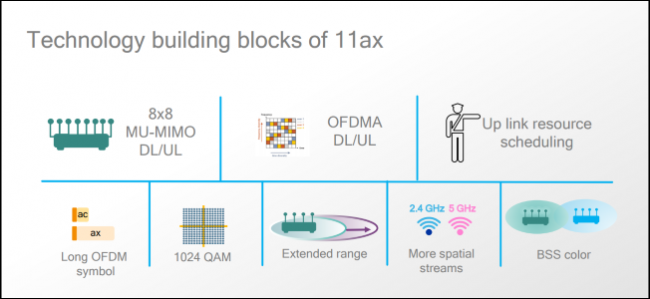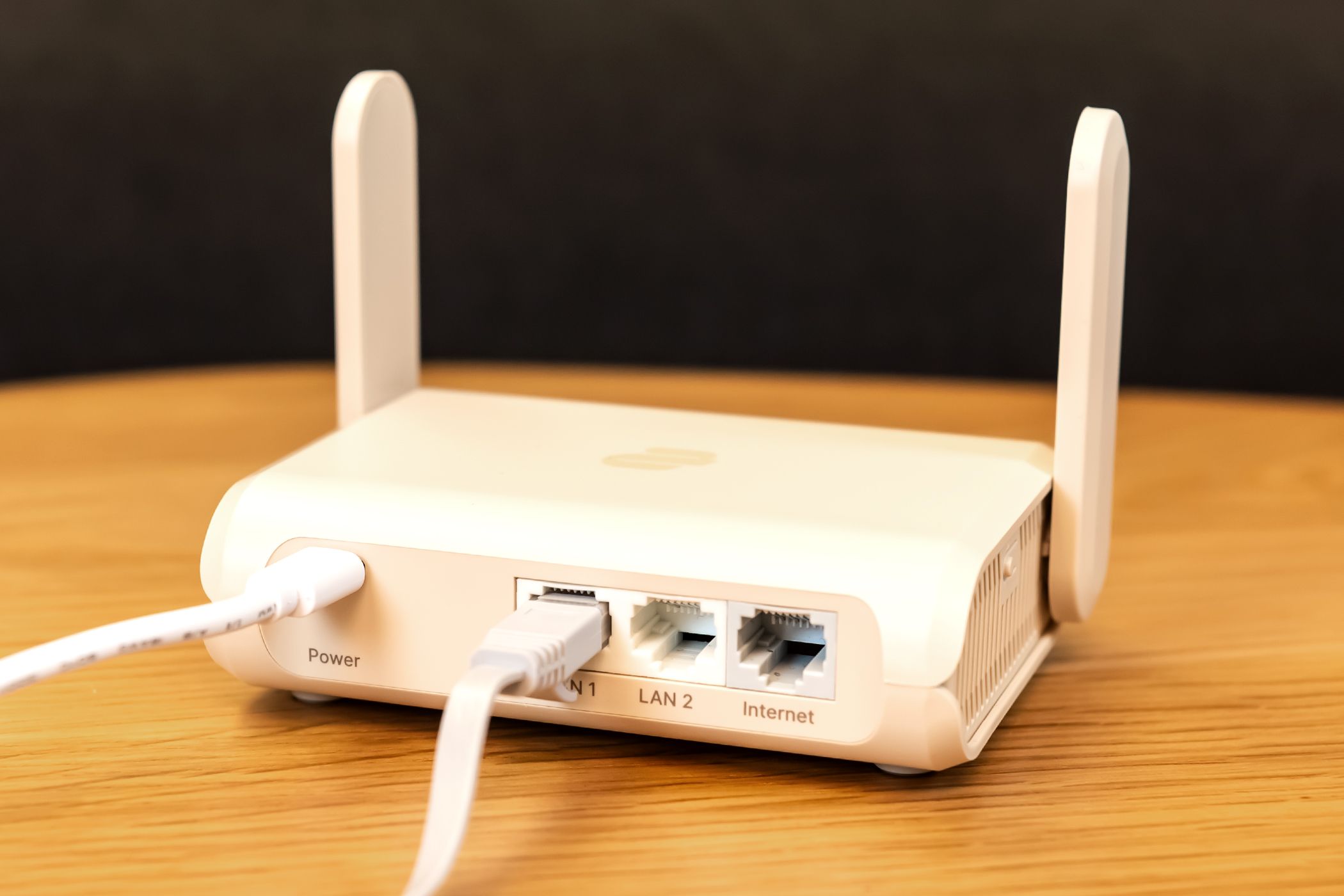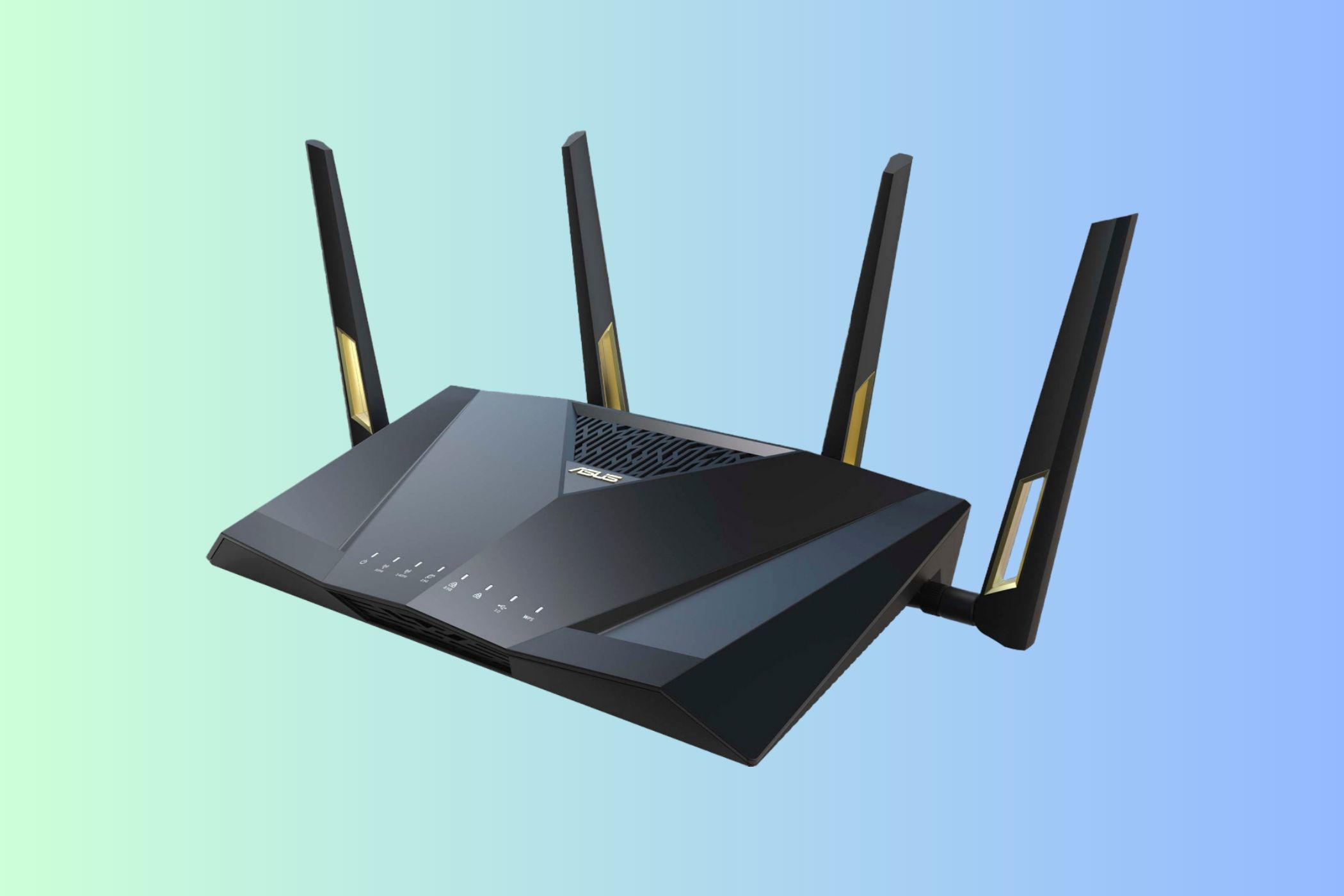Exploring the Advantages of Wi-Fi 6 - The Next Generation Wireless Protocol, 802.11AX Explained

Exploring the Advantages of Wi-Fi 6 - The Next Generation Wireless Protocol, 802.11AX Explained
Quick Links
- Wi-Fi Has Version Numbers Now
- What Is Wi-Fi 6?
- How Wi-Fi 6 Battles Congestion
- Is Wi-Fi 6 Secure?
- How Do You Upgrade to Wi-Fi 6?
- Which Devices Support Wi-Fi 6?
- What Is Wi-Fi 6E and Wi-Fi 7?
Key Takeaways
- Wi-Fi 6 is the wireless standard that superseded Wi-Fi 5, offering faster speeds, more security, and better performance in crowded areas with improved technology.
- All devices need to be compatible with Wi-Fi 6 (or better) to utilize the standard’s full potential, but it’s common among modern devices.
- Wi-Fi 6 has already been surpassed in performance by the arrival of Wi-Fi 6E and 7 standards, so consider all your options if you’re upgrading.
Buy any wireless device or piece of Wi-Fi networking hardware and you see usually a Wi-Fi version number somewhere in the specs. A now-common version is Wi-Fi 6, which officially arrived in late 2019. Here’s everything you need to know about the standard also called 802.11ax.
Wi-Fi Has Version Numbers Now

Wi-Fi Alliance
If you haven’t shopped for networking gear lately, you might be surprised to learn that, yes, Wi-Fi now has version numbers, which were announced with Wi-Fi 6. Even those old confusing Wi-Fi standard names like “802.11ac” have been renamed to user-friendly names like “Wi-Fi 5.” Here are the versions of Wi-Fi you’ll be seeing:
| Name | IEEE Name | Release Date | Important Changes |
|---|---|---|---|
| Wi-Fi 4 | 802.11n | 2009 | MIMO |
| Wi-Fi 5 | 802.11ac | 2014 | Added MU-MIMO , 160MHz Bandwidth |
| Wi-Fi 6 | 802.11ax | 2019 | Added OFDMA , WPA3 |
| Wi-Fi 6E | 802.11ax | 2020 | Added 6GHz Band |
| Wi-Fi 7 | 802.11be | 2024 | 320MHz Bandwidth, and more |
Older versions of Wi-Fi are no longer in wide use and aren’t retroactively being assigned new names. But, if they were, here’s what they’d be called:
| Name | IEEE Name | Release Date |
|---|---|---|
| Wi-Fi 1 | 802.11b | 1999 |
| Wi-Fi 2 | 802.11a | 1999 |
| Wi-FI 3 | 802.11g | 2003 |
The Wi-Fi Alliance announced in 2018 that they would like to see these numbers appear in software so you can tell which Wi-Fi network is newer and faster while connecting on your smartphone, tablet, or laptop. It’s still possible you may start seeing Wi-Fi numbers on your phone, tablet, or laptop eventually, but we haven’t often seen them yet.

Wi-Fi Alliance
Still, we were thrilled about the version numbers. It was a simple, easy change that should have been made a long time ago. It made it much easier for normal people to understand Wi-Fi. After all, many people can get faster Wi-Fi speeds by upgrading their home routers —but not everyone knows that. However, the Wi-Fi Alliance has no power to force companies to use these version numbers, although they “encourage” companies to adopt them. Some manufacturers may ignore these version numbers and just call this generation of Wi-Fi “802.11ax” instead. Many companies aren’t in a rush to rename existing 802.11ac to Wi-Fi 5, either. We hope all companies will eventually get on board with the new naming scheme.
What Is Wi-Fi 6?
Wi-Fi 6 is the sixth generation of wireless network protocols trademarked by the Wi-Fi Alliance. Based on the 802.11ax standard from the IEEE, Wi-Fi 6 is designed to improve bandwidth, decrease network latency, and boost the battery life of wireless devices over previous version. Here are the details about the improvements Wi-Fi 6 brings to the table.
Wi-Fi 6 also has an extension — dubbed Wi-Fi 6E — that is available on some devices. We discuss Wi-Fi 6E more below.
Faster Wi-Fi

Corbin Davenport / How-To Geek
As usual, this Wi-Fi standard offers faster data transfer speeds over earlier standards. If you’re using a Wi-Fi router with a single device, maximum potential speeds should be up to 40% higher with Wi-Fi 6 compared to Wi-Fi 5. Wi-Fi 6 accomplishes this through more efficient data encoding, resulting in higher throughput. Mainly, more data is packed into the same radio waves. The chips that encode and decode these signals keep getting more powerful and can handle the extra work. This newer standard even increases speeds on 2.4GHz networks . While the industry has shifted to 5GHz Wi-Fi (and 6Ghz thanks to Wi-Fi 6E) for less interference, 2.4GHz is still better at penetrating solid objects. And there shouldn’t be as much interference for 2.4GHz as old cordless telephones and wireless baby monitors are retired.
Longer Battery Life
A “target wake time” (TWT) feature means your smartphone, laptop, and other Wi-Fi-enabled devices should have longer battery life, too. When the access point is talking to a device (like your smartphone), it can tell the device exactly when to put its Wi-Fi radio to sleep and exactly when to wake it up to receive the next transmission. This will conserve power, as it means the Wi-Fi radio can spend more time in sleep mode. And that means longer battery life. This also helps with low-power “Internet of Things “ devices that connect via Wi-Fi.
Better Performance in Crowded Areas
Wi-Fi tends to get bogged down when you’re in a crowded place with a lot of Wi-Fi-enabled devices. Picture a busy stadium, airport, hotel, mall, or even a crowded office with everyone connected to Wi-Fi. You’re probably going to have slow Wi-Fi. The Wi-Fi 6 standard, also known as 802.11ax, incorporated many technologies to help with this. Intel trumpeted that Wi-Fi 6 showed signal degradation of only 20 percent when going from 5 to 25 connected users while a Wi-Fi 5 signal degraded by 80 percent. This doesn’t just apply to busy public places. It could apply to you at home if you have a lot of devices connected to Wi-Fi, or if you live in a dense apartment complex.
How Wi-Fi 6 Battles Congestion

Qualcom
You don’t really need to know the details. A Wi-Fi 6 access point with a Wi-Fi 6 device will work better. But here’s what’s going on under the hood: Wi-Fi 6 can now divide a wireless channel into a large number of subchannels. Each of these subchannels can carry data intended for a different device. This is achieved through something called Orthogonal Frequency Division Multiple Access , or OFDMA . The Wi-Fi access point can talk to more devices at once. The new riderless standard also has improved MIMO — Multiple In/Multiple Out. This involves multiple antennas, which let the access point talk to multiple devices at once. With Wi-Fi 5, the access point could talk to devices at the same time, but those devices couldn’t respond at the same time. Wi-Fi 6 has an improved version of multi-user or MU-MIMO that lets devices respond to the wireless access point at the same time. Wireless access points near each other may be transmitting on the same channel. In this case, the radio listens and waits for a clear signal before replying. With Wi-Fi 6, wireless access points near each other can be configured to have different Basic Service Set (BSS) “colors.” This “color” is just a number between 0 and 7. If a device is checking whether the channel is all clear and listens in, it may notice a transmission with a weak signal and a different “color.” It can then ignore this signal and transmit anyway without waiting, so this will improve performance in congested areas, and is also called “spatial frequency re-use.” These are just some of the most interesting things, but the new Wi-Fi standard also includes many smaller improvements. Wi-Fi 6 will also include improved beamforming , for example.
Is Wi-Fi 6 Secure?

Sergio Rodriguez / How-To Geek
Yes, Wi-Fi 6 is secure, and it is even more secure than previous versions of Wi-Fi. The Wi-Fi Alliance requires Wi-Fi 6 Certified devices support Wi-Fi Protected Access 3 (WPA3 ), the latest security standard. WPA3 presents a few significant improvements over WPA2.
- It makes weak passwords more resistant to brute-force attacks
- It encrypts your internet traffic on public Wi-Fi networks
- It makes stronger encryption schemes available for enterprise use
It means that the weak, easily memorable password you picked for your Wi-Fi network is less vulnerable to hackers than it used to be. However, just because technology is getting better doesn’t mean you should be lax — always create the strongest password you can remember . Encrypting all of your traffic while on a public Wi-Fi network is also a huge win for privacy and security. Previously, public Wi-Fi networks would transmit your information unencrypted, which meant it could conceivably be read by eavesdroppers also connected to the network. Plenty of applications utilize their own encryption to protect your data, like encrypted chat apps , HTTPS , your VPN , and others, but it is nice to know that WPA3 creates an additional layer of protection between you and a malicious actor, even if your app isn’t encrypted. The last change isn’t something you’ll experience at home unless you install enterprise-grade hardware, but it does still impact your life. We live in an era where almost all of our sensitive personal data is created and stored digitally, and it often needs to be transmitted to other devices for any number of reasons. Better enterprise encryption helps ensure that your financial, health, and other sensitive data is more secure when transmitted wirelessly in professional environments.
How Do You Upgrade to Wi-Fi 6?
You can upgrade to Wi-Fi 6 by replacing your router with a newer model that supports Wi-Fi 6. Physically, the upgrade process is pretty simple. Just connect your new router to your modem using a short Ethernet cable. Modems and routers often mark the port you should use to connect them in yellow, though that isn’t universal. Routers will also typically mark the correct port “Internet,” while the corresponding port on the Modem is often labeled “Ethernet” or “LAN.” Then configure the Wi-Fi router using the appropriate app or with a computer on the network. The real trick is figuring out which router you want. Wi-Fi 6 routers come in every shape and size, and router specs and features vary significantly between models. There really isn’t a single router that would work for every circumstance, so here are some things to consider when planning a purchase.
Make sure you purchase a Wi-Fi 6E router instead of a regular Wi-Fi 6 router if you want access to the 6GHz band.
How Big Is Your Home, and What Is It Made Of?
Wi-Fi signals weaken over distance, and if you have a large home, you might find that even a well-placed router struggles to deliver good coverage to every location. The materials your home is made of matter too — materials like brick, concrete, and metal are great at blocking Wi-Fi signals , whereas drywall and wood don’t typically dampen your signal very much. Wi-Fi 6 routers don’t inherently provide a more powerful signal than Wi-Fi 5, so if your current router struggles to deliver the performance you want, you should consider a Mesh Wi-Fi System when you upgrade. Mesh Wi-Fi networks are composed of a main hub and several satellites. You connect the hub to your modem like you normally would, then you place the satellites in the parts of your home with poor Wi-Fi reception and connect them to the hub using some kind of “backhaul .” Your wireless device, like a phone or laptop, connects to the satellite with the best connection, and then the satellite transmits the information to the hub over the backhaul. Typically, the backhaul connection will be a regular wired Ethernet connection or a Wi-Fi connection, but it could also be fiber optic cable, coaxial cable with MoCA , or even a powerline adapter.
How Fast Does It Need to Be, and How Many Ports Do You Need?
Not all routers are created equal. For example, some routers only have a 1 gigabit internet port on them, which means that the best speed you’ll ever get will be limited to 1 gigabit. If you’re lucky enough to have access to an internet plan that is faster than that, you wouldn’t want to limit yourself by buying a router that can’t utilize the faster connection. If you plan to use a lot of wired devices, you can also buy a router with extra ports. Just remember, you can always add more Ethernet ports to your router using an Ethernet switch. In that case, you should check the maximum speed of the LAN ports on your router, too, since they’ll be what determines the maximum speed of wired devices attached to the switch.
How Many Advanced Features Do You Want?
More expensive routers tend to have more fancy features built into them. They often have USB ports to connect a Network-Attached Storage (NAS) device, advanced security and management features, 2.5 Gigabit Ethernet ports, support for VPNs, and more. If you just want to connect a few computers, your TV, and some mobile devices, then don’t worry too much about these features. However, if you’re into tinkering, self-hosting, or have other specific uses, the time you save fighting with your router might well be worth the extra cost.
What Does the Router Look Like?

Asus
Modern Wi-Fi routers are really varied in appearance. Some of them resemble miniature robots or spaceships that would look right at home in a dystopian sci-fi blockbuster, whereas others are unobtrusive orbs or boxes. If you’ve decorated your home to match a specific aesthetic, a router that looks like it should be capable of fighting aliens might be off-putting. It is a relatively minor point, but if you’re going to drop a few hundred dollars on a piece of technology, you should be okay looking at it, especially since Wi-Fi routers tend to be centrally located .
Which Devices Support Wi-Fi 6?
So, you’ve upgraded your router, but how do you get Wi-Fi 6 on other devices? Things like cell phones, tablets, and most other small devices cannot be upgraded to Wi-Fi 6 — you’ll need to replace them if you want to use Wi-Fi 6. However, you probably shouldn’t go out of your way to spend that money. Wi-Fi 6 routers are fully backward compatible with devices that use Wi-Fi 4 or Wi-Fi 5 , so none of your gadgets will suddenly stop working because you upgraded your router. In other words, if you want Wi-Fi 6 performance on your phone, you’ll need both a wireless router (access point) and a smartphone that supports Wi-Fi 6. If you connect a laptop that only supports Wi-Fi 5 to your Wi-Fi 6 router, that particular connection will operate in Wi-Fi 5 mode. But your router can still use Wi-Fi 6 with your phone at the same time. Most new wireless devices — like Apple’s iPhones, Samsung’s phones, a majority of laptops, and most other things you can think of — all support Wi-Fi 6 or better. You don’t need to go out of your way to get Wi-Fi 6-enabled hardware if you buy something produced in the last few years. Just keep an eye out for “Wi-Fi 6” or “Wi-Fi 6 Certified” in the spec sheet if you want to be absolutely sure. Larger devices with user-serviceable parts, like desktop PCs and some laptops, can be upgraded to support Wi-Fi 6 by adding a wireless network card . Not all laptops are user-serviceable, however, and for those that aren’t, you’ll need a USB network adapter instead if you want Wi-Fi 6. Just keep in mind that USB Wi-Fi 6 adapters tend to be pretty bulky devices compared to some Wi-Fi 5 wireless adapters you can buy.
You might find products on Amazon that claim to be small Wi-Fi 6 USB adapters. At the time of writing in mid 2024, the smallest, least expensive Wi-Fi 6 adapter we could find from a reputable company is this unit from TP-Link . Small Wi-Fi 6 adapters still command a premium as of mid 2024, and if you find a small, inexpensive adapter, there is a good chance it is a fake product .
What Is Wi-Fi 6E and Wi-Fi 7?
Wi-Fi 6E is an extension of the Wi-Fi 6 standard . It keeps most of the same specifications as Wi-Fi 6, and even has the same IEEE designation — 802.11ax — as Wi-Fi 6. The major distinction is that Wi-Fi 6E incorporates the 6GHz band into the existing standard, allowing for faster, lower latency connections between devices that support the 6GHz band. Wi-Fi 6 devices are not compatible with the 6GHz band available to Wi-Fi 6E devices, but they can still connect via the 2.4GHz or 5GHz bands without an issue. That means you don’t need to worry about upgrading your router, modem and router combo unit , or any of your wireless devices and being unable to connect to older hardware — they’ll still work.
Wi-Fi 7 is the successor standard to Wi-Fi 6 and Wi-Fi 6E, arriving in early 2024 to bring even better speeds and signal. If you really want to future-proof your network and don’t mind spending extra for the most cutting-edge tech, you should consider buying a Wi-Fi 7 router rather than Wi-Fi 6.
Also read:
- [New] Expert Strategies for Efficient Funimate Use for 2024
- [New] In 2024, The Ultimate Guide to Adaptive IGTV Video Dimensions
- [Updated] Add Personality to Your Device A Comprehensively Tailored Sound & Ringtone Guide for Android for 2024
- 2024 Approved Editorial Elegance at the End
- 8 Ultimate Fixes for Google Play Your Vivo Y27 5G Isnt Compatible | Dr.fone
- Complete Game of Thrones S08 Visuals: Stunning BG & WP Artwork by YL Computing - Explore the Epic Finale
- Download & Update: HP LaserJet 1320 Printer Drivers on Windows
- Download Brother HL-L2360DW Drivers
- Effortless Installation: Freshest AMD Radeon RX 480 Driver Updates Just a Click Away
- Get the Most Out of Your Lenovo ThinkPad X260 with Optimal Windows 11 Driver Updates
- How to Perform an AMD Graphics Drivers Upgrade on Windows 10, 11 & 7
- In 2024, Flipping Fun Facts Into Memes with KineMaster
- In 2024, From Concept to Completion Producing a Viral Facebook Reel
- In 2024, Top 10 Best Spy Watches For your Tecno Spark 20C | Dr.fone
- In 2024, Youtube to Animated GIFs Conversion Guide Online Tutorial for Success
- Latest Nvidia GeForce 210 Driver Upgrade: Compatible with Windows 10
- New HP DeskJet 3755 Inkjet All-in-One Printer Driver Installation Guide for Windows 10/8/7
- Secure & Fast: Download Intel's Official USB 3.0 Drivers for WinDows 10
- Step-by-Step Guide to Downloading and Installing the Intel AC 7260 Wireless Network Driver
- Title: Exploring the Advantages of Wi-Fi 6 - The Next Generation Wireless Protocol, 802.11AX Explained
- Author: Richard
- Created at : 2024-12-11 02:33:16
- Updated at : 2024-12-12 16:02:45
- Link: https://hardware-updates.techidaily.com/exploring-the-advantages-of-wi-fi-6-the-next-generation-wireless-protocol-80211ax-explained/
- License: This work is licensed under CC BY-NC-SA 4.0.